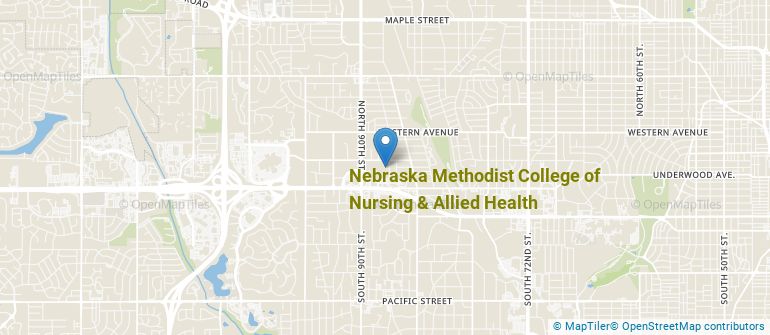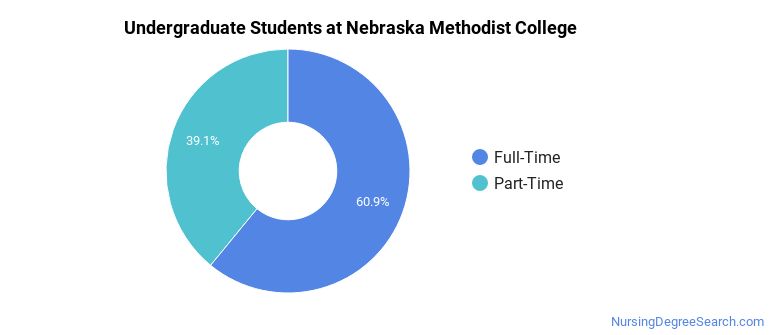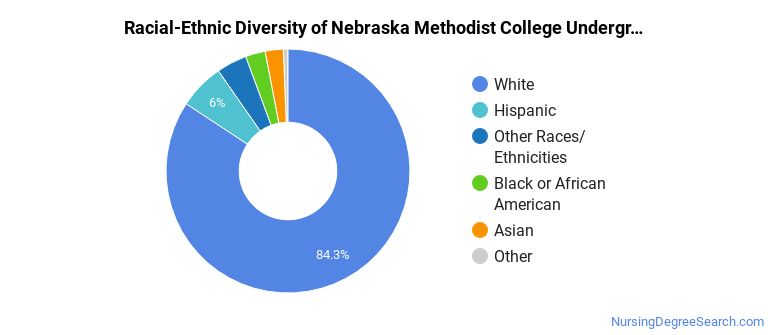Nebraska Methodist College of Nursing & Allied Health Nursing Programs
Nebraska Methodist College of Nursing & Allied Health is a private not-for-profit institution located in Omaha, Nebraska. The surrounding area of the school is a good match for students who enjoy city life.
Where Is Nebraska Methodist College of Nursing & Allied Health?

Contact details for Nebraska Methodist College are given below.
| Contact Details | |
|---|---|
| Address: | 720 North 87Th Street, Omaha, NE 68114-2852 |
| Phone: | 402-354-7000 |
| Website: | www.methodistcollege.edu |
How Do I Get Into Nebraska Methodist College?
You can apply to Nebraska Methodist College online at: www.methodistcollege.edu/admissions/get-started/apply-now
Admission Requirements for Nebraska Methodist College
| Submission | Required? |
|---|---|
| High School GPA | 1 |
| High School Rank | 3 |
| High School Transcript | 1 |
| College Prep Program | 3 |
| Recommendations | 3 |
| SAT or ACT Scores | 3 |
| TOEFL | 5 |
How Hard Is It To Get Into Nebraska Methodist College?
Approximately 2% of accepted students are men and 98% are women. The acceptance rate for men is 67%, and the acceptance rate for women is 91%.
Can I Afford Nebraska Methodist College of Nursing & Allied Health?
The net price is calculated by adding tuition, room, board and other costs and subtracting financial aid.
Student Loan Debt
It's not uncommon for college students to take out loans to pay for school. In fact, almost 66% of students nationwide depend at least partially on loans. At Nebraska Methodist College, approximately 51% of students took out student loans averaging $6,134 a year. That adds up to $24,536 over four years for those students.
Nebraska Methodist College of Nursing & Allied Health Undergraduate Student Diversity

There are also 398 graduate students at the school.
Gender Diversity
Of the 496 full-time undergraduates at Nebraska Methodist College, 9% are male and 91% are female.

Racial-Ethnic Diversity
The racial-ethnic breakdown of Nebraska Methodist College of Nursing & Allied Health students is as follows.

| Race/Ethnicity | Number of Grads |
|---|---|
| Asian | 12 |
| Black or African American | 13 |
| Hispanic or Latino | 30 |
| White | 418 |
| International Students | 3 |
| Other Races/Ethnicities | 20 |
Geographic Diversity
Nebraska students aren't the only ones who study at Nebraska Methodist College of Nursing & Allied Health. At this time, 2 states are represented by the student population at the school.
Over 3 countries are represented at Nebraska Methodist College. The most popular countries sending students to the school are Côte d’Ivoire, Mexico, and Georgia.
Nebraska Methodist College of Nursing & Allied Health Nursing Concentrations
The table below shows the number of awards for each concentration.
| Major | Bachelor’s | Master’s | Doctor’s | TOTAL |
|---|---|---|---|---|
| Registered Nursing | 224 | 0 | 0 | 224 |
| Nursing Practice | 0 | 0 | 24 | 24 |
| Nursing Administration | 0 | 17 | 0 | 17 |
| Other Registered Nursing, Nursing Administration, Nursing Research and Clinical Nursing | 0 | 12 | 0 | 12 |
| Adult Health Nurse/Nursing | 0 | 0 | 3 | 3 |
| Public Health/Community Nurse/Nursing | 0 | 0 | 2 | 2 |
| Clinical Nurse Specialist | 0 | 0 | 1 | 1 |
| TOTAL | 224 | 29 | 30 | 283 |
References
*The racial-ethnic minorities count is calculated by taking the total number of students and subtracting white students, international students, and students whose race/ethnicity was unknown. This number is then divided by the total number of students at the school to obtain the racial-ethnic minorities percentage.
More about our data sources and methodologies.
